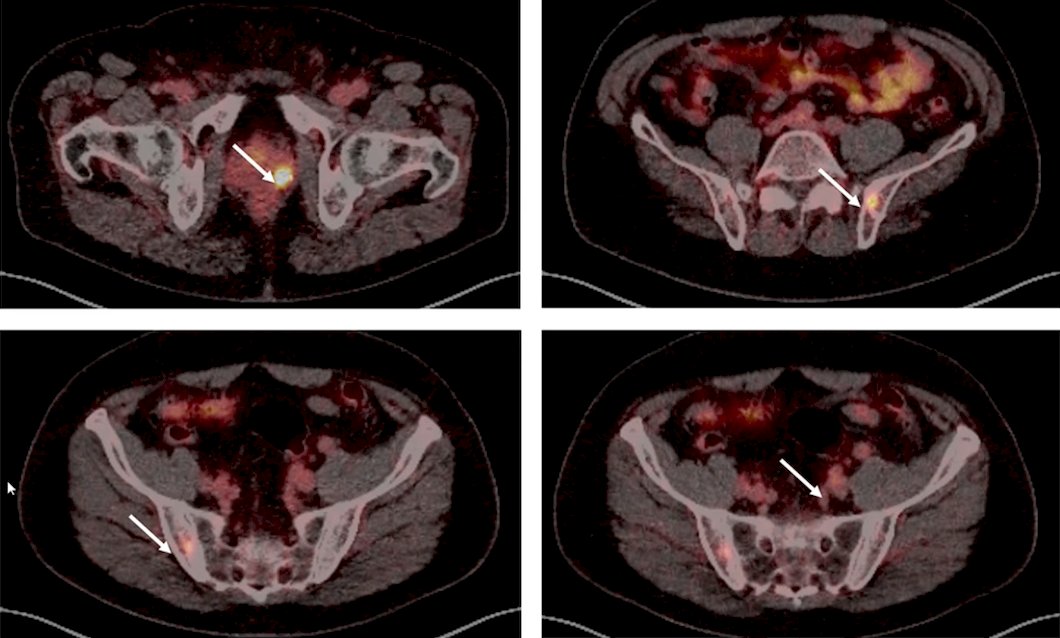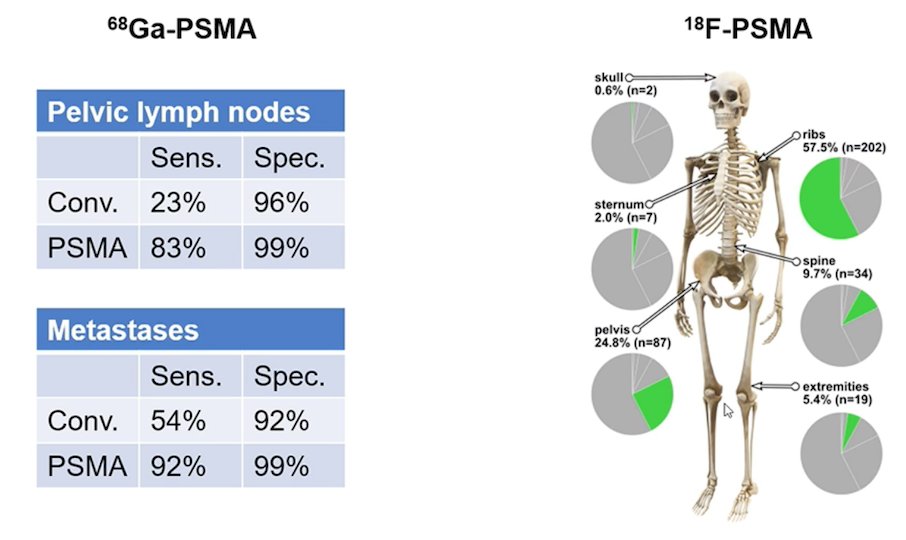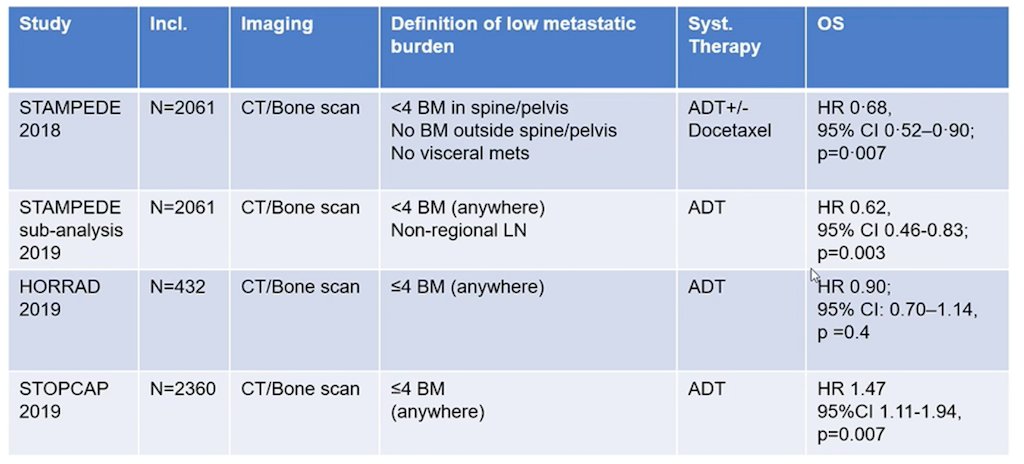(UroToday.com) The 2022 EAU annual meeting featured a session on prostate cancer high-risk local treatment, including a presentation by Dr. Stephanie Kroeze discussing that limited bone involvement detected by PSMA PET/CT is not palliative treatment and may be curative. To start, Dr. Cladia Kesch from Germany presented a case for discussion. The patient is a 66 year old man with a PSA of 8.2 ng/mL, normal digital rectal exam, prostate volume of 60 mL, IPSS score of 11, and IIEF score of 25. His medical history included hypertension (treated with an ACE inhibitor) and obesity (BMI 30 kg/m2). He subsequently underwent a 12-core TRUS prostate biopsy that showed Gleason score 4+4 = 8 prostate adenocarcinoma in 4 out of 12 cores. His conventional imaging staging studies were negative (cN0M0), however his staging 68Ga-PSMA-PET/CT suggested lymph node involvement and potentially oligometastatic bone involvement (cN1M1b):

Dr. Kroeze then discussed why this clinical situation is not necessarily palliative and may be curative. False positive uptake does exist, for both 68Ga-PSMA-11 PET/CT and 18F-PSMA PET/CT (particularly in the ribs) imaging:

However, Dr. Kroeze notes that in the current case, the bone lesions are probably real metastases, but does performing a PSMA PET/CT improve survival? The EAU guidelines suggest that PSMA PET/CT is more accurate for staging than CT and bone scan for high-risk disease, but to date no outcome data exist to inform subsequent management (level of evidence: 1b). Furthermore, when using PSMA PET or whole body MRI to increase sensitivity, be aware of the lack of outcome data of subsequent treatment changes (strong recommendation). Dr. Kroeze notes that when we know there are oligometastatic lesions present, current evidence suggests that radiotherapy to the prostate combined with systemic therapy improves survival in patients with low metastatic burden:

But since there is no cure for these patients as of yet, do we need to ablate all of the metastases as well? This may be important considering that both the primary and metastases can be origins of metastatic spread, and metastasis-directed therapy can result in durable response in select patients.
Dr. Kroeze concluded her presentation discussing that limited bone involvement detected by PSMA PET/CT is not palliative treatment and may be curative by emphasizing that retrospective studies show a benefit in prognosis to multidisciplinary total eradication therapy in select patients:

Presented by: Stephanie G. C. Kroeze, MD, PhD, Department of Radiation Oncology, University Hospital Zurich, University of Zurich, Switzerland
Written by: Zachary Klaassen, MD, MSc – Urologic Oncologist, Assistant Professor of Urology, Georgia Cancer Center, Augusta University/Medical College of Georgia, @zklaassen_md on Twitter during the 2022 European Association of Urology (EAU) Annual Hybrid Meeting, Amsterdam, NL, Fri, July 1 – Mon, July 4, 2022.
Related Content:
EAU 2022: Limited Bone Involvement Detected by PSMA PET Only: From Curative to Palliative Treatment? YES


